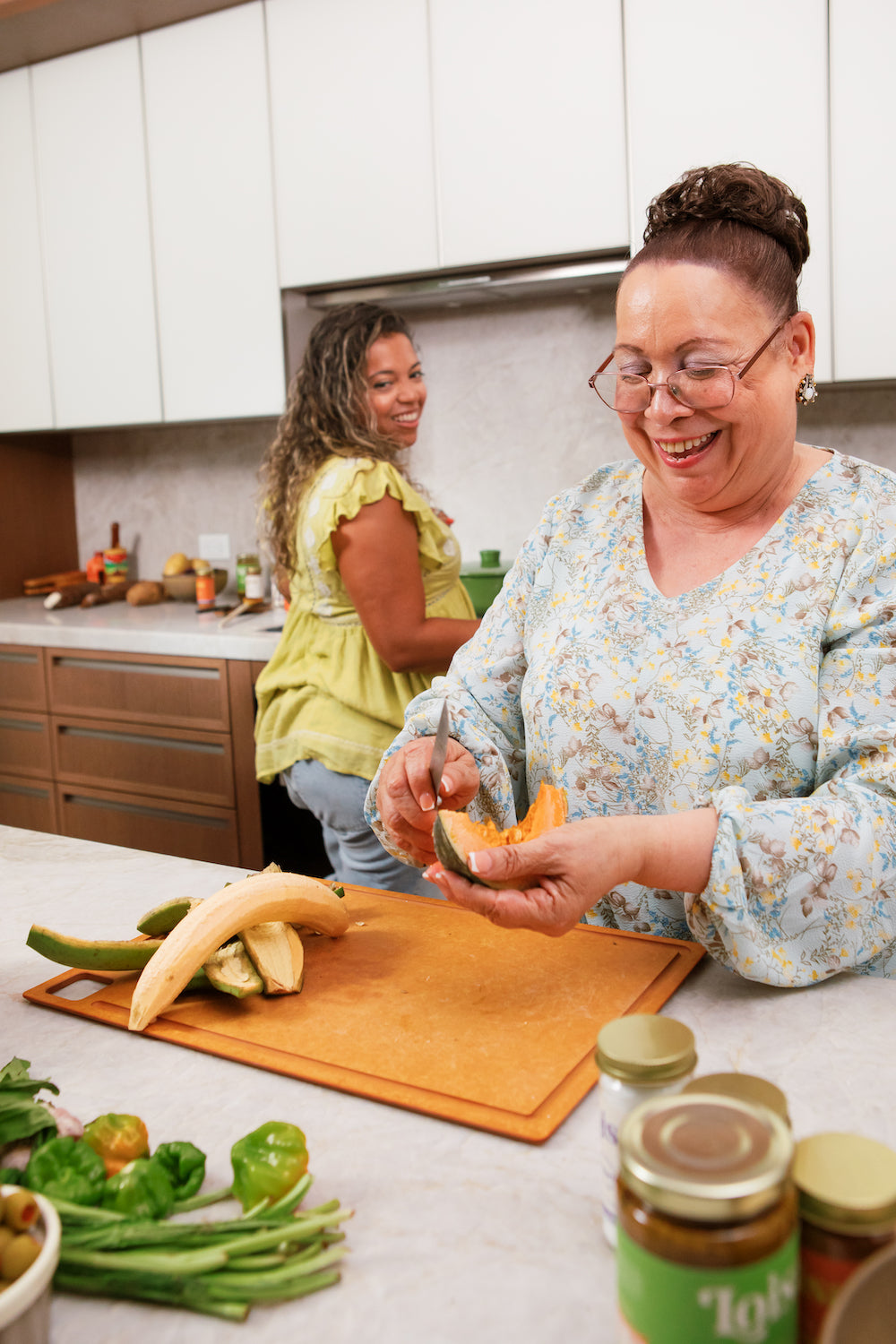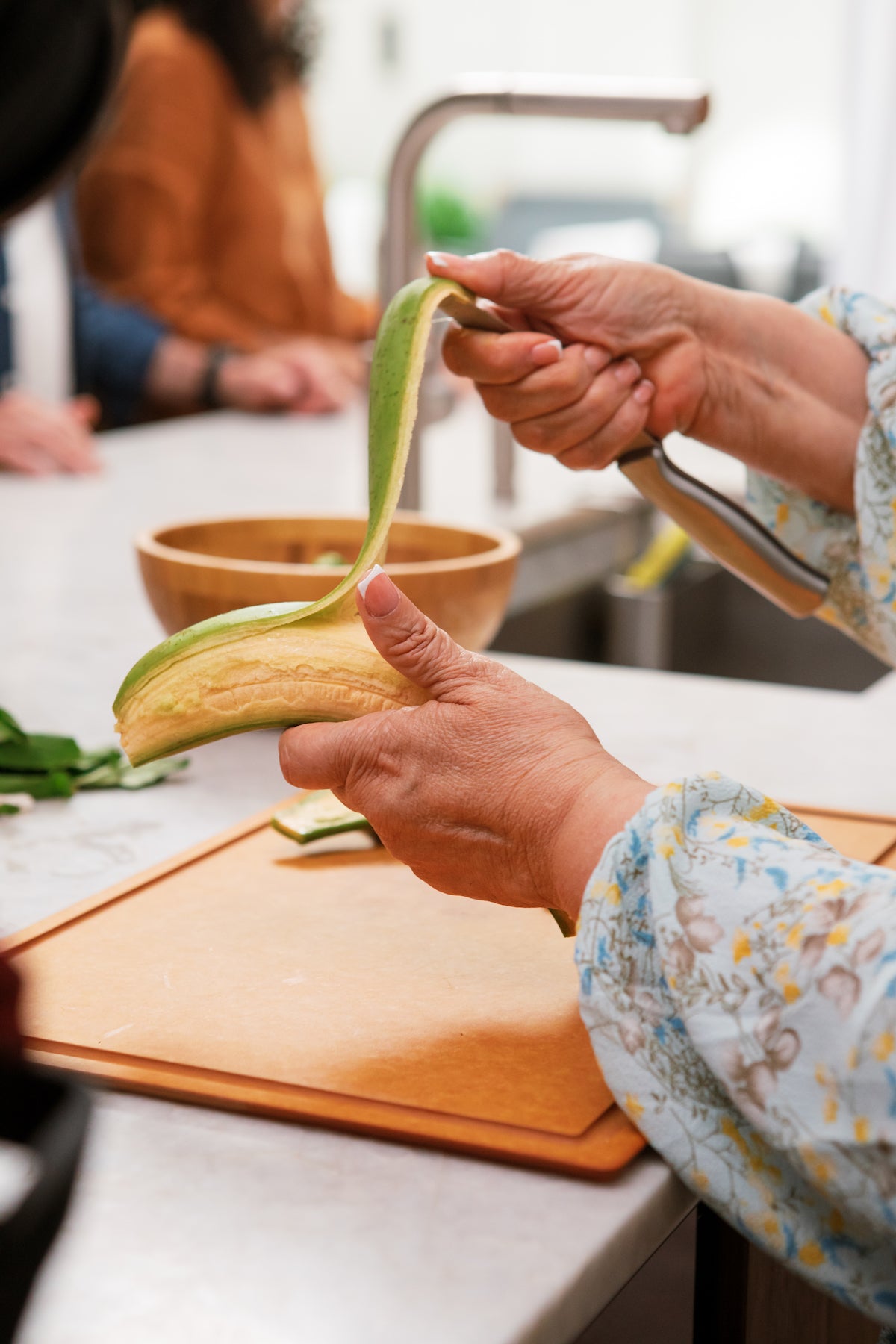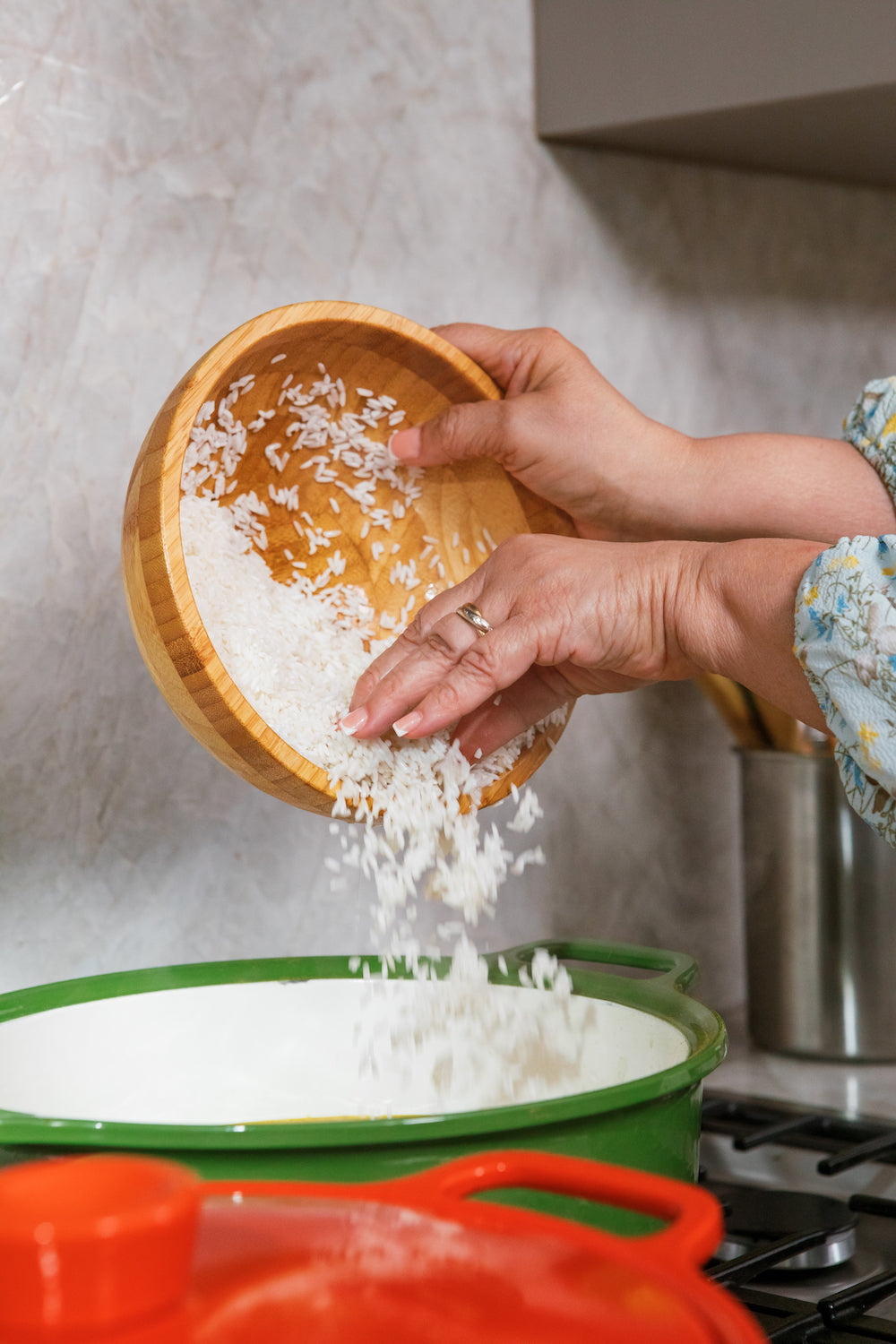
7 Ways Latin Cuisine Helps Reduce Food Waste & Promote Sustainability
Our ancestors were sustainable in their cooking techniques and recetas, it's time we continue on those traditions.
By: Gisela Bouvier, MBA, RDN, LDN | @corporatenutritionist
Our cuisine is known for its vibrant and bold flavors. With every bite, you can reminisce about your times visiting el campo, gathering at abuela’s table on Noche Buena, or feasting on the streets during special celebrations. But Latin cuisine is more than just flavor. Within it lies a rich tradition of resourcefulness and ingenuity where every ingredient and every scrap is used and transformed with the preparation of every meal.

In a time where food waste has become a global concern, these tips and tricks within the cocina that have been passed down across generations are more important than ever. Here are 7 ways Latin cuisine is helping to reduce food waste and promote sustainability worldwide:
- 1. Nose-to-Tail Cooking: In Hispanic countries, no part of the animal goes to waste. During a traditional asado Argentino, all parts of the cow can be found cooking a la parrilla - from the cow’s lengua (tongue) to its chinchulín (intestine). In Mexico, every meaty part of a pig can be found in dishes like menudo and morcilla. And in Colombia, their cuisine may include chicken organ meats in a meal, or chicken feet in a soup. Latin cuisine ensures that every part of an animal that can be eaten is actually eaten helping to reduce grocery costs to families and significantly reduce food waste.
-
2. Incorporating Pantry Staples: Often times, purchasing only fresh ingredients can increase food waste when unable to prepare or consume them all before they spoil. Having both fresh ingredients and shelf-stable foods in your pantry can help create blended and nutritious meals while helping to minimize food waste. According to Leah Reitmayer MS, RD, CSSD, LDN, owner of Lettuce Eat Dessert, Latin cuisine incorporates pantry staples, such as rice and beans, that can be added to any meal. Additionally, adding different dried herbs and spices can create other flavor profiles and further reduce the amount of fresh ingredients needed to make a delicious and traditional meal.

- 3. Utilizing Scraps: When cooking meat or poultry, Latin cooking traditions ensure to use the bones to make broths and soups. Any extra scraps from different vegetables like onions, peppers and tomatoes are used to make Sofrito. Sofrito can be used as a base and flavor enhancer for any meal. Zariel Grullón, RDN, CDN, owner of Love Your Chichos, states: “All you need to do is chop up the extra odds and ends of your vegetables, blend them together with some herbs and spices, and voilà – you've got a nutritious and versatile base that adds depth to countless dishes.”
- 4. Preservation Techniques: To limit food waste, there are different preservation techniques that are utilized in many Latin countries, such as pickling, fermentation and drying. Fermented drinks in Mexican cuisine include pozol, colonche or tepache. Escabeche is made from pickled vegetables, like carrots, cauliflower and jalapeños, and is also enjoyed in Mexico and in many countries worldwide. Erika Ruiz Trelut, RD also adds that growing up in the Mexican culture, she noticed that broken tortillas were dried to be used for tostadas or chilaquiles to avoid ever throwing them away.

- 5. Use of Leftovers: To ensure no food ever goes to waste, many familias make sure to consume or repurpose their leftovers. The rice cooked as a side dish for one meal may be incorporated into arroz con pollo for the following day. The beans cooked for dinner the night before may be refried and added to breakfast the next morning. The leftover chicken may be shredded and added to a soup. According to Mexican-American registered dietitian Sandra Chavez, MS, RDN, she ate “tuti fruti” meals often as a child. These meals consisted of blending together different leftovers on her plate from meals that had been cooked during the week.
-
6. Reusing Containers in the Kitchen: Growing up Hispanic means knowing a solid container never ends up in the trash can. Any time a food item is purchased and it comes in a good plastic tub, tin with a closable lid, or glass jar, the container is usually kept to be used to store something else. This helps to limit the waste of plastic, aluminum and glass over all. As Sandra Chavez adds, “It is rare to find a refrigerator that doesn’t have shelves stocked with plastic containers and jars that rarely hold the item that is on the label. I personally remember opening a sour cream container only to find yesterday’s refried beans in it.” Additionally, many of the food containers are also kept to house everyday supplies like sewing kits or pens and pencils.

- 7. Focus on Plant-Forward Dishes: Latin cuisine also has a strong focus on plant-forward meals. Maria E Rodriguez, MS, RD, CSR, LND, founder of ME Nutrition Services, states “Including foods like beans, rice and vegetables, have a lower environmental impact compared to heavy-meat diets.” She also adds that meals like sancocho and asopaos incorporate not only these plant foods but can be adapted based on the ingredients you have, allowing for seasonal produce and reducing the need to use imported or out-of-season ingredients. It is very difficult to find a Latin dish that does not incorporate at least one plant food. In fact, even many of our desserts have plant foods. Before bananas become too ripe, Maria Ines Flores, owner of the Powerful Athlete, states that they are used to make pan de banano, a Guatemalan banana bread that can be enjoyed any time.
From the busy streets of Mexico City to the serene and snowy landscapes of la Patagonia, our cocinas have a sense of resourcefulness and ingenuity, where every ingredient, every scrap, and every container finds its purpose. These simple, yet important, traditions have been passed down to us, and it’s an honor to continue them on with the commitment to reducing food waste and promoting sustainability.



